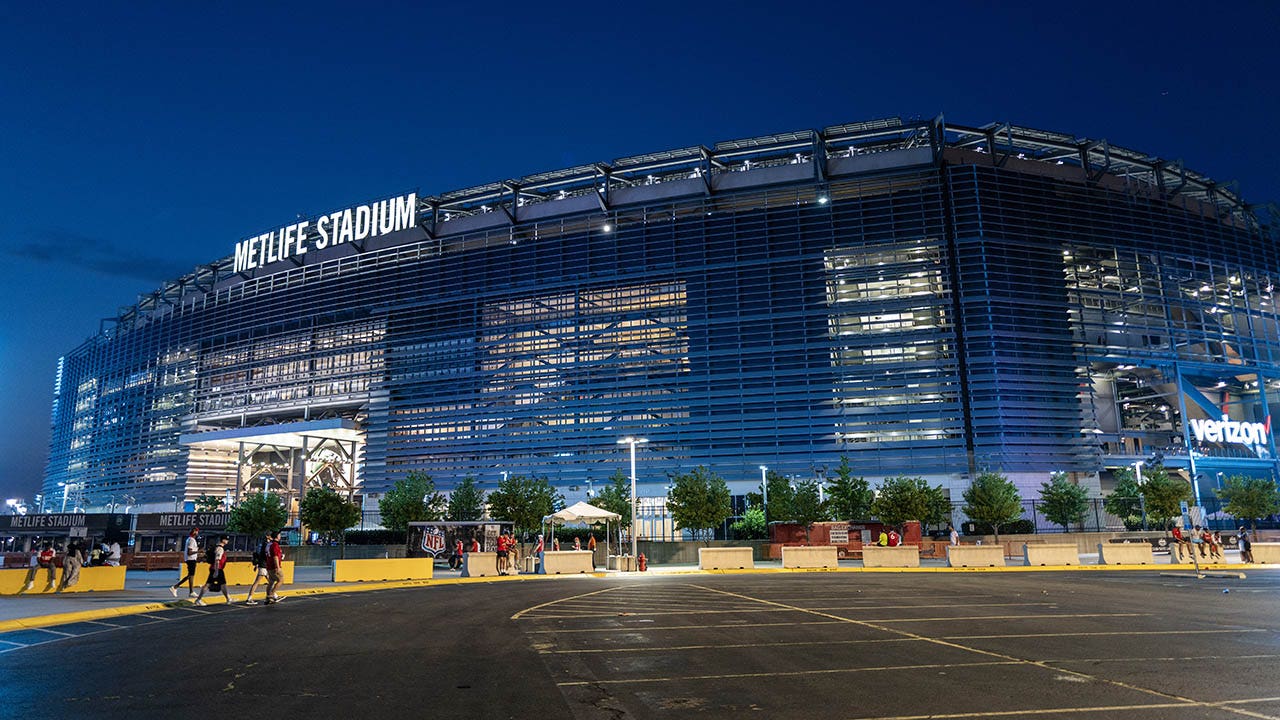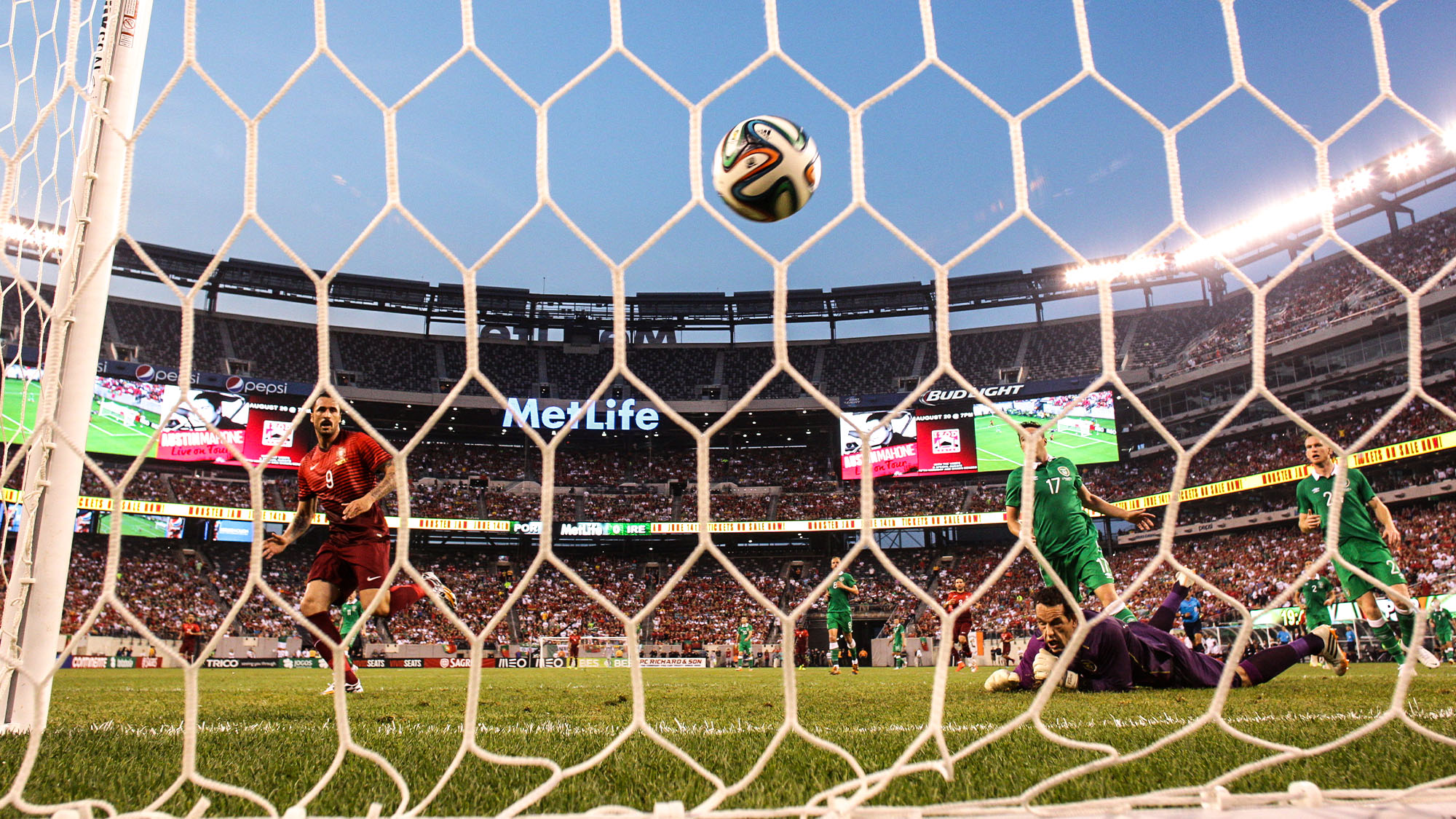World Cup MetLife: Imagine the roar of the crowd, the electrifying atmosphere, the global spotlight focused on East Rutherford, New Jersey! This isn’t just another soccer match; it’s a World Cup showdown at the iconic MetLife Stadium, a venue known for hosting massive sporting events. We’ll delve into the stadium’s history, its capacity to handle a World Cup’s demands, and the logistical hurdles overcome to make this a reality.
Get ready to experience the thrill of a World Cup game from the perspective of fans, organizers, and the global audience watching on.
From the meticulous planning and security measures to the economic impact on the local community and the global media frenzy, we’ll explore every facet of hosting a World Cup match at MetLife Stadium. We’ll also consider the fan experience, from pre-game excitement to post-match celebrations, and examine how MetLife Stadium compares to other World Cup venues around the globe.
This is more than just a game; it’s a global spectacle brought to life in New Jersey.
Economic Impact of a World Cup Match at MetLife Stadium: World Cup Metlife
Hosting a World Cup match at MetLife Stadium generates significant economic benefits for the surrounding area, extending far beyond the immediate revenue from ticket sales. The influx of international and domestic visitors creates a ripple effect across various sectors, boosting local businesses and contributing to the overall economic vitality of the region.
Economic Benefits for the Local Area
The economic benefits are multifaceted and substantial. Increased spending on accommodation, transportation, food and beverage, entertainment, and retail significantly boosts local businesses. Hotels experience high occupancy rates, restaurants see a surge in customers, and local shops benefit from increased sales. Furthermore, the event creates temporary employment opportunities in various sectors, such as hospitality, security, and transportation. The positive media exposure associated with hosting a World Cup match also enhances the region’s image and attractiveness to future investments and tourism.
For example, during the 2014 World Cup in Brazil, the economic impact on host cities was widely reported to be significantly positive, demonstrating the potential for similar success in New Jersey.
Key Stakeholders Who Benefit Economically
A wide range of stakeholders benefit economically from a World Cup match at MetLife Stadium. These include:
- Local Businesses: Hotels, restaurants, bars, shops, and transportation services all experience increased revenue due to the influx of visitors.
- Stadium Operators: MetLife Stadium directly benefits from ticket sales, concessions, and parking fees.
- Government Agencies: Local and state governments collect taxes from increased sales and tourism-related activities.
- Tourism Sector: Hotels, tour operators, and related businesses experience a significant boost in activity.
- Employment Sector: Temporary jobs are created in various sectors, providing income for local residents.
Revenue Streams Generated by a World Cup Game
The revenue generated from a World Cup match is diverse and substantial. Major revenue streams include:
- Ticket Sales: A significant portion of revenue comes directly from ticket sales, with prices varying depending on seat location and demand.
- Concessions: Sales of food, beverages, and merchandise within the stadium contribute significantly to overall revenue.
- Parking Fees: Parking fees collected from attendees generate substantial income.
- Sponsorship and Advertising: Companies pay for the rights to sponsor the event or advertise within the stadium and surrounding areas.
- Media Rights: The sale of broadcasting rights to television networks and other media outlets generates substantial revenue.
Comparison with Other Major Events
While precise figures are proprietary, comparing the economic impact of a World Cup match with other major events at MetLife Stadium, such as NFL games or major concerts, reveals a significant difference in scale. World Cup matches attract a much larger international audience, resulting in greater spending and wider economic benefits. The duration of the event also plays a role.
While NFL games are single events, a World Cup match is part of a larger tournament, potentially drawing in visitors for a longer period and leading to more sustained economic activity.
Economic Contributions of a World Cup Match at MetLife Stadium, World cup metlife
The economic contributions of a World Cup match at MetLife Stadium can be summarized as follows:
- Increased tourism and visitor spending.
- Significant revenue generation for the stadium and related businesses.
- Creation of temporary and permanent jobs.
- Enhanced regional image and attractiveness to future investment.
- Increased tax revenue for local and state governments.
Security and Safety Measures for a World Cup Match at MetLife Stadium

Securing a World Cup match at a venue like MetLife Stadium requires a multi-layered approach, integrating advanced technology with robust personnel deployment. The scale of the event necessitates meticulous planning and coordination across various agencies and departments to ensure a safe and enjoyable experience for all attendees. This involves not only preventing potential threats but also providing swift and efficient responses to any unforeseen incidents.
Security Personnel Deployment
The security operation for a World Cup match at MetLife Stadium would involve a significant contingent of personnel. This includes numerous uniformed and plainclothes police officers, private security guards, trained medical personnel (paramedics and EMTs), and stadium staff trained in emergency procedures. The specific number of personnel deployed would depend on factors such as anticipated attendance, threat assessments, and specific event requirements.
A command structure would be established to coordinate the efforts of all personnel, ensuring effective communication and rapid response to any situation. Specialized units, such as bomb squads and K-9 units, would also be deployed as part of the overall security plan.
Technological Security Measures
Advanced technology plays a critical role in modern stadium security. MetLife Stadium would likely utilize a sophisticated network of CCTV cameras, strategically placed throughout the stadium and its surrounding areas. These cameras would provide real-time surveillance, enabling security personnel to monitor crowds, identify potential threats, and respond to incidents quickly. Metal detectors and X-ray machines at entry points would screen attendees for prohibited items, while access control systems would manage entry and exit points, regulating crowd flow and preventing unauthorized access.
Facial recognition technology might also be deployed, though its use would be subject to privacy regulations and ethical considerations. Communication systems, including two-way radios and mobile data networks, would facilitate seamless communication between security personnel and other emergency services.
Fan Safety and Emergency Response
Fan safety is paramount. Clear signage, announcements, and designated personnel would guide fans to their seats, emergency exits, and first aid stations. Emergency response plans would be meticulously detailed, outlining procedures for evacuations, medical emergencies, and other potential incidents. First aid stations would be strategically located throughout the stadium, staffed by trained medical personnel. Ambulances and other emergency vehicles would be stationed nearby, ready to respond swiftly to any incidents.
The stadium’s infrastructure would also be inspected thoroughly to ensure compliance with safety regulations. Furthermore, detailed crowd management strategies would be implemented to prevent overcrowding and ensure safe movement of fans within the stadium.
Comparison with Other Major Sporting Venues
Security measures at MetLife Stadium for a World Cup match would be comparable to, and potentially exceed, those employed at other major sporting venues globally. Venues hosting major international events, such as the Olympics or other FIFA World Cup matches, implement similarly robust security protocols. The specific technologies and personnel deployments might vary depending on the venue’s size, location, and specific security risks, but the core principles remain consistent: comprehensive surveillance, stringent access control, well-trained personnel, and detailed emergency response plans.
Examples include Wembley Stadium in London, the Allianz Arena in Munich, and the Maracana Stadium in Rio de Janeiro, all of which employ advanced technology and extensive security personnel for large-scale events.
Security Procedures Flowchart
Imagine a flowchart with the following steps: Start: Pre-event threat assessment and risk mitigation planning. Step 1: Stadium perimeter security checks and access control implementation. Step 2: Fan entry screening (metal detectors, bag checks, potentially facial recognition). Step 3: Crowd management and flow control throughout the stadium. Step 4: Real-time monitoring via CCTV and other surveillance systems.
Step 5: Incident response procedures (medical emergencies, security breaches, etc.). Step 6: Post-event security procedures and clean-up. End: Debriefing and analysis of security operations.
Hosting a World Cup match at MetLife Stadium is a monumental undertaking, a complex interplay of logistics, security, economic impact, and global media attention. From the initial preparations and stadium upgrades to the post-match analysis and economic benefits for the region, the event leaves an indelible mark. The fan experience, amplified by the stadium’s atmosphere and the global reach of the event, ensures that a World Cup match at MetLife Stadium will be remembered for years to come, a testament to the power of sport on a global scale.
The stadium’s legacy will be enhanced by the success and experience of hosting such a prestigious event.
Browse the implementation of icc odi world cup 2019 in real-world situations to understand its applications.


